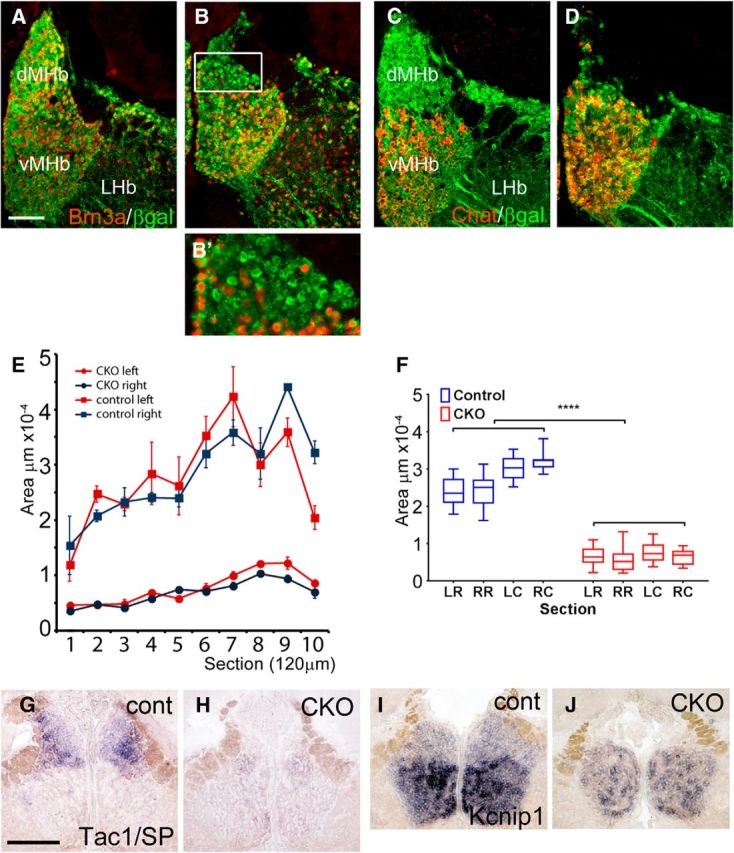Figure 2.

Characterization of the Syt6Cre/Pou4f1flox dMHbCKO mouse model. A, B, Brn3a nuclear immunostaining and a lacZ tracer targeted to the Pou4f1 locus are used to show the extent of the dMHb lesion in dMHbCKO mice. Control mice have the genotype Pou4f1flox/tlacZ and dMHbCKO mice Syt6Cre/Pou4f1flox/tlacZ. The lacZ gene product β-gal allows the identification of neurons normally fated to express Brn3a in the absence of Brn3a protein. Nuclear Brn3a expression is reduced even in the surviving neurons in the dMHb of the dMHbCKO mice (B′). No obvious change is observed in Brn3a expression in the LHb, consistent with the infrequent colocalization of Syt6Cre and Brn3a in this part of the habenula (Fig. 1C). C, D, Neurons of the vMHb, distinguished by ChAT expression, are intact in both the control (C) and dMHbCKO mice (D). E, Comparison of the area of the dMHb in the coronal plane of section along the entire rostrocaudal extent of the MHb in control and dMHbCKO mice. Both the left and right dMHb is significantly reduced in the dMHbCKO mice compared with control mice (n = 3 control and n = 7 dMHbCKO mice). F, Measurement of the area/extent of ablation in the entire behavioral cohort of control and dMHbCKO mice used in behavioral analyses. Sections were measured at two rostrocaudal levels: the rostral/central MHb at bregma −1.6 mm and the caudal MHb at bregma −1.9 mm, corresponding to sections 6 and 9 in E. Immunostaining was used to define the dMHb and vMHb compartments as in A–D. LR, Left/rostral; RR, right/rostral; LC, left/caudal; RC, right/caudal. The loss of dMHb neurons in dMHbCKO mice was highly consistent and symmetrical (n = 9 control and n = 14 dMHbCKO mice). G–J, Characteristic expression patterns of habenula-enriched transcripts. SP/Tac1 and Kcnip1 transcripts are restricted to the dMHb and vMHb, respectively, in control mice. The area of the region expressing SP/Tac1 mRNA is greatly reduced, whereas the area of Kcnip1 expression is not affected in the dMHbCKO mice. LHb, Lateral habenula.
